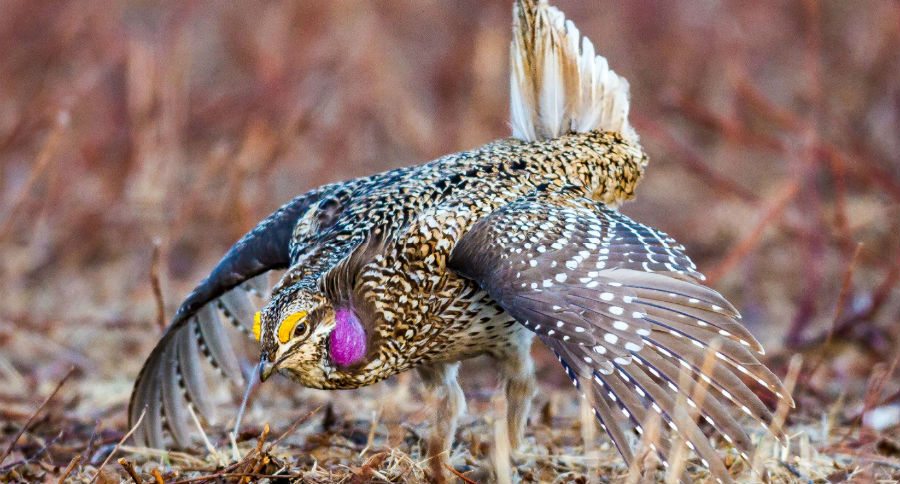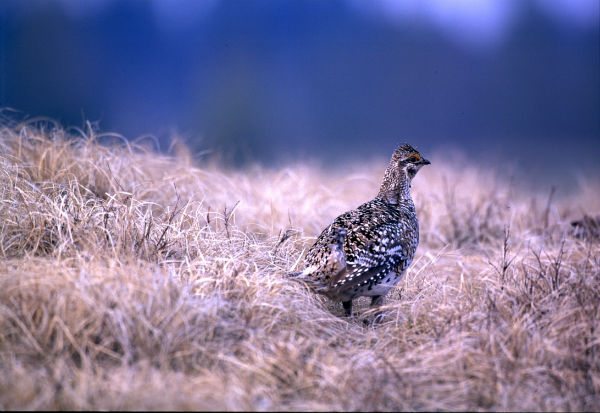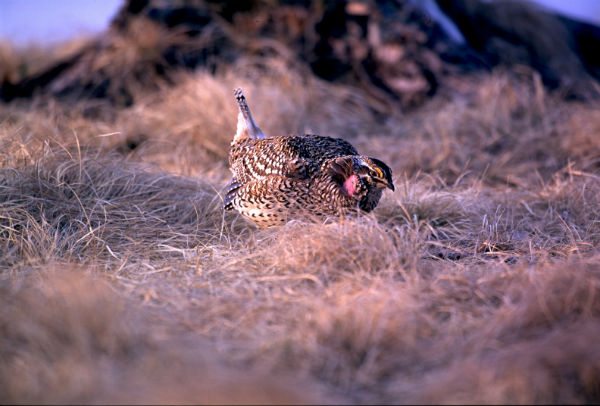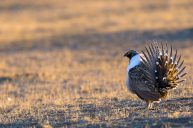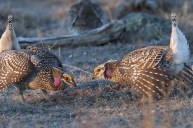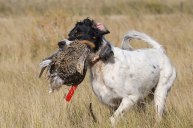Michigan is a prime ruffed grouse hunting destination. But the state has another upland game bird that doesn't get a lot of attention: the sharp-tailed grouse.
When you mention sharp-tailed grouse, folks tend to think of the Great Plains states. They are an open prairie bird, and much of the sharptail conservation news seems to emanate in the western states.
But the Upper Midwest is also home to sharp-tailed grouse, albeit in fewer numbers and more restricted habitat. They also take a backseat to the popular ruffed grouse as a Midwest hunter's target.
There are populations of these birds in Wisconsin, Minnesota and Michigan, and a few hunters do pursue them. Wisconsin, however, closed its sharptail hunting season this year due to declining grouse numbers.
Michigan has a three-week season (October 10-31) in portions of Chippewa and Mackinac counties in the Upper Peninsula. The DNR allows hunters to take two birds a day, have four in possession and kill no more than six total during the season. In 2014, the last year a sharptail-centric survey was taken, 289 hunters took 134 birds.
There are six subspecies of sharptails in North America, with the species in Michigan being the prairie sharp-tailed grouse. This prairie bird inhabits brushy successional stages of deciduous and mixed deciduous-coniferous areas. It prefers a mix of grassy, brushy areas and agricultural land.
"You'll see them in hay fields and cattle-grazed grassland fields. Sometimes you see sentry birds sitting on top of round hay bales," says Al Stewart, an upland game bird specialist with the Michigan DNR. "They like that brushy, fringe edge along grassland areas. Sharp-tailed grouse are an open-land species and much of the Upper Peninsula wants to be trees. One of our challenges is trying to maintain these large open areas."
In the late 1800s, sharptails were quite numerous across the UP. Extensive logging and forest fires in the region meant plenty of open, non-forest habitat the birds liked. But since then, logging has declined as an industry and more heavily wooded forests have replaced prairie habitats.
As a result, sharptail numbers dwindled. But, in spite of losing 90 percent of sharptail habitat by the late 1980s, the state is determined to improve habitat for the prairie birds.
"We work with a variety of partners—soil conservation districts, private landowners, and the Michigan Sharp-tailed Grouse Association—to maintain sharptail habitat and sharptails so we can maintain a hunting season in this state," Stewart says.
After Michigan closed the season on sharptails in 1996, they began to conduct radio-telemetry field surveys to try to get a better handle on sharptail population numbers. Prior to the use of this technology, surveys were conducted by observing and recording data from established breeding or "dancing" grounds known as leks.
During the spring breeding season, the birds gather in leks, where the males engage in elaborate courtship rituals to attract females. They stamp their feet rapidly, about 20 times per second, rattle their tail feathers and turn in circles or dance forward. The males also inflate and deflate purple neck sacs during the display, while cooing to entice females.
"We found the birds aren't always faithful to one lek," said David Luukkonen, a DNR research biologist who has been instrumental in conducting the radio-telemetry surveys.
"They move around a lot. We not only went to established leks, but we did random samples of other open-land areas. A little more than half the areas we surveyed had sharp-tailed grouse in them. And we surveyed areas multiple times and found out that on any given morning, you'll only detect them about half the time. We were pleasantly surprised by the number of birds we found."
Improved habitat due to wildfires and subsequently greater population numbers justified the DNR re-opening the sharp-tailed grouse season a decade after its initial closure. But, hunting sharptails is a low-percentage, challenging hunt.
"You won't get a lot of shots at them," Stewart said. "In your effort to hunt sharp-tailed grouse, you may spend a lot of time walking through pastures and meadows and then, if your dogs go on point, if you get close enough to get within a 20- to 30-yard range of them, you can harvest one."
"They're fairly wary," he added. "Sometimes when you enter a field, they flush out at the far side of the field. You know how pheasants are wary and wild late in the season? Sharp-tailed grouse are even more wary."
Like what you see here? You can read more great articles by David Smith at his Facebook page, Stumpjack Outdoors.
NEXT: RUFFED GROUSE DRUMMING ENSEMBLE: MUSIC FOR THE LADIES
